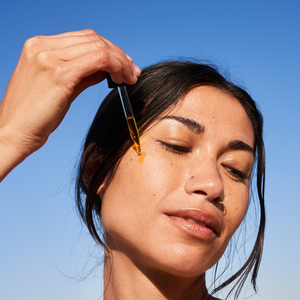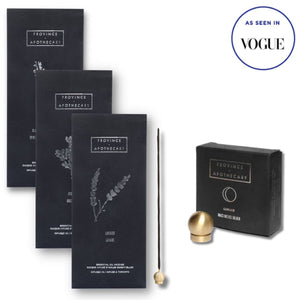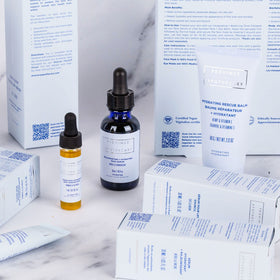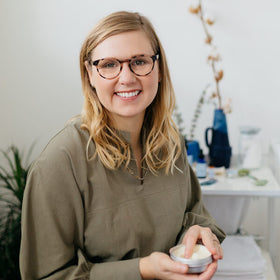Feelosophy + The Healing Power of Touch

Ashley Brodeur is a Toronto-based yoga instructor whose practice, Feelosophy, opens an intimate and sobering conversation around the importance of touch as a healing modality. Ashley's work is dedicated to empowering others to define what healthy touch looks like and how to incorporate touch into our daily lives. We caught up with Ashley to learn more about Feelosophy.
Tell us a bit about Feelosophy – what prompted you to start your practice?
Feelosophy was started after many of my yoga students kept asking for more touch during class. I knew that the way touch was/wasn’t being offered in yoga needed to change to be more accessible and approachable. I wanted to introduce touch in yoga, not as a way to fix or correct a posture, since that is not my role. Each person comes to yoga in their own body–a body that has held them up over the years, bodies that have given birth, been injured, ran marathons, moved, danced, felt joy, sorrow and loss. For me, touch is a way for people to experience new things in their bodies. Touch has the power to help us lean into the experience of being in their bodies vs. in our heads.
What sets touch apart from other healing modalities?
Touch is the only one of our five senses we can’t live without. Touch is a basic need, but more and more we are lacking spaces to receive supportive, safe touch. Touch is very intimate, because you are entering into another person's space. When offering touch, you not only have to be aware of your own space, energy and breath, you have to be aware of the other person’s as well. Offering touch requires the utmost presence with another person, and holding space for someone on this level at times can be challenging and uncomfortable.
What does healthy touch look like?
Healthy touch first requires each person to look at their own history and relationship to touch. How were they touched when they were younger. Did their parents hug them? Was touched used to discipline? If you are in a relationship, how does your partner touch you? If you are not in a relationship, how do you seek out touch? Where in your body do you like to be touched? What areas do you not enjoy being touched? Once we can create this dialogue around touch, it will aid in finding healthy touch.
For example, I was sexually assaulted in my early 20’s. A process involving touch that I needed to process in order to figure out where I am and am not comfortable receiving touch. Through reflection, I realized that I feel safe being touched on my arms and receiving neck, facial and scalp massages. I did not enjoy hugs from people I didn’t know, and many times hugs made me feel like I was being suffocated. Once I made this connection, I knew what I wanted from touch and places I could ask for it. I told people close to me not to hug me, unless I asked, and instead I sought out massages, facials, and manicures from people who specialize in this kind of touch.
How can we incorporate touch into our daily lives?
First, start talking about touch. Have conversations with people in your life about touch. For many people, touch is not something we talk about. With the #metoo movement, many people feel touch is a grey area full of discomfort that’s easier to ignore than explore. Healthy touch is touch that you have asked for. To me, healthy touch resides in the spaces where I can receive touch without feeling it needs to be reciprocated or that I need to give anything of myself because someone has offered touch.
What do people love most about Feelosophy?
People love the community Feelosophy has created. Our classes start with a check-in question, which gives us a chance to talk to one another before we move. We want people to feel connected to the instructor, but also to one another. We don’t believe in people just showing up and leaving. We want people to talk to one another–to learn your name and more about who you are. For many people who travel, who are single, or who live away from family, Feelosophy is the only time during the week when they get touched, and this can be instrumental in their well-being. Many people who have come have felt empowered to start a dialogue with their partners around what they need and don’t need via touch. One man even made the link between his reaction to not wanting to be touched when he is upset, and how he can convey this to his partner.
Where can people experience Feelosophy?





